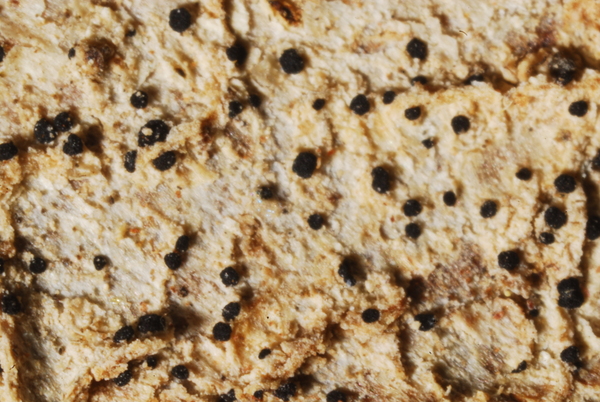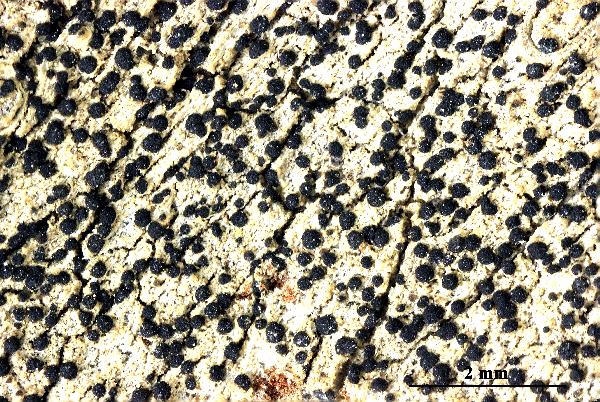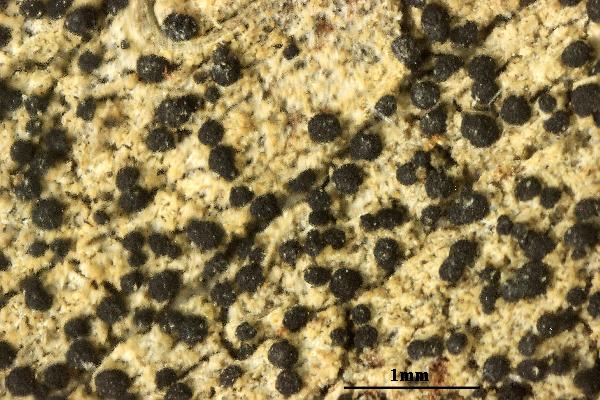Arthonia mediella Nyl.
Not. Sällsk. Fauna Fl. Fenn. Förh., ny ser. 1: 238, 1859.
Synonyms: Arthonia sordaria Körb.
Distribution: N - TAA (Nascimbene 2003, 2014, Nascimbene & al. 2006e, 2007b, 2009, 2014, 2022, Thor & Nascimbene 2007, Nimis & al. 2015), Lomb (Nascimbene 2006), Piem (Isocrono & al. 2004), Lig (TSB 33048). C - Tosc (Benesperi & al. 2007), Umb (Ravera 1999, Ravera & al. 2006), Abr (Nascimbene & al. 2019, Gheza & al. 2021), Mol (Caporale & al. 2008). S - Cal (Nimis & Puntillo 2003, Puntillo 2011).
Description: Thallus crustose, thin, continuous to finely rimose, smooth or roughened, grey to yellowish grey. Apothecia arthonioid, black, round to weakly angular, 0.2-0.5 mm across, with a flat to slightly convex, dull, epruinose disc, without a distinct proper margin. Proper exciple poorly evident; epithecium brown-black; hymenium colourless to pale yellow, (30-)40-60 µm high, not inspersed with oil droplets, K-, I+ orange-yellow; paraphysoids strongly coherent, simple or slightly branched, thin, the apical cells capitate, 3-5 µm wide, with a dark brown cap; hypothecium reddish brown in upper part, brown-black in lower part, 30-70 µm high. Asci 8-spored, broadly clavate, semi-fissitunicate, with a large apical dome and a distinct ocular chamber, Arthonia-type. Ascospores 3(-4)-septate, slightly constricted at septa, with subequal cells, hyaline, spindle-shaped, (10-)11-16(-18) x (2.5-)3-4(-5) µm. Pycnidia dark, immersed to sessile, 0.3-0.6 mm across. Conidia bacilliform, 4-6 x c. 1 µm. Photobiont chlorococcoid. Spot tests: thallus K-, C-, KC-, P-, UV-. Chemistry: without lichen substances.Note: a cool-temperate to boreal-montane, probably circumpolar, early coloniser of acid bark, mostly of conifers, found both in humid Abies-Fagus forests and in open Larix-stands, certainly more widespread in the subalpine belt of the Alps and extending to Calabria along the Apennines. The species does not belong to Arthonia and should be included in the Chrysothricaceae (Frisch & al. 2014)
Growth form: Crustose
Substrata: bark
Photobiont: green algae other than Trentepohlia
Reproductive strategy: mainly sexual
Most common in areas with a humid-warm climate (e.g. most of Tyrrenian Italy)
Pioneer species
Commonnes-rarity: (info)
Alpine belt: absent
Subalpine belt: rather rare
Oromediterranean belt: absent
Montane belt: very rare
Submediterranean belt: absent
Padanian area: absent
Humid submediterranean belt: absent
Humid mediterranean belt: absent
Dry mediterranean belt: absent

Predictive model
Herbarium samples
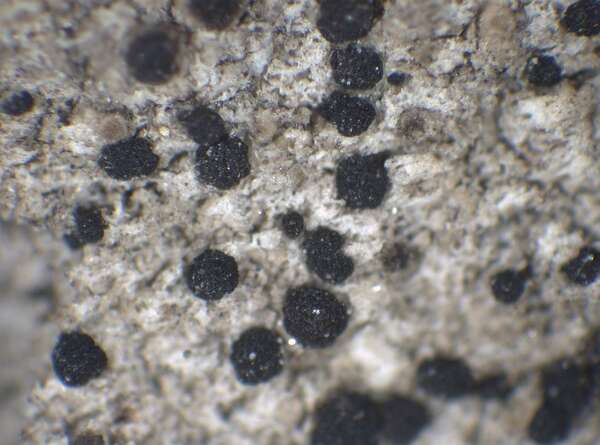

P.L. Nimis; Owner: Department of Life Sciences, University of Trieste
Herbarium: TSB (9402)
2003/01/23
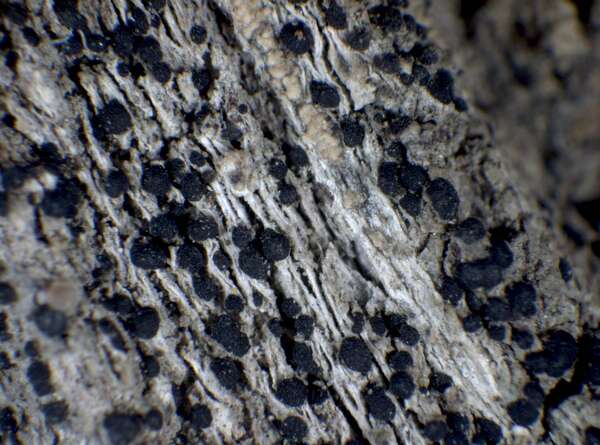

P.L. Nimis; Owner: Department of Life Sciences, University of Trieste
Herbarium: TSB (9402)
2001/11/21
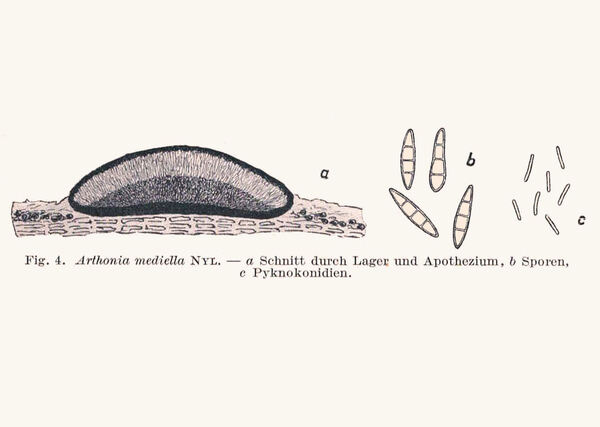
Redinger, K. (1938) Arthoniaceae, Graphidaceae . In Kryptogamen-Flora von Deutschland, Österreich und der Schweiz. Band 9, 2 Abt., Part 1 (G. L. Rabenhorst, ed.): 181–404. Leipzig: Borntraeger
Growth form: Crustose
Substrata: bark
Photobiont: green algae other than Trentepohlia
Reproductive strategy: mainly sexual
Most common in areas with a humid-warm climate (e.g. most of Tyrrenian Italy)
Pioneer species
Commonnes-rarity: (info)
Alpine belt: absent
Subalpine belt: rather rare
Oromediterranean belt: absent
Montane belt: very rare
Submediterranean belt: absent
Padanian area: absent
Humid submediterranean belt: absent
Humid mediterranean belt: absent
Dry mediterranean belt: absent

Predictive model
| Herbarium samples |


P.L. Nimis; Owner: Department of Life Sciences, University of Trieste
Herbarium: TSB (9402)
2003/01/23


P.L. Nimis; Owner: Department of Life Sciences, University of Trieste
Herbarium: TSB (9402)
2001/11/21

 INDEX FUNGORUM
INDEX FUNGORUM
 GBIF
GBIF
 DOLICHENS
DOLICHENS
